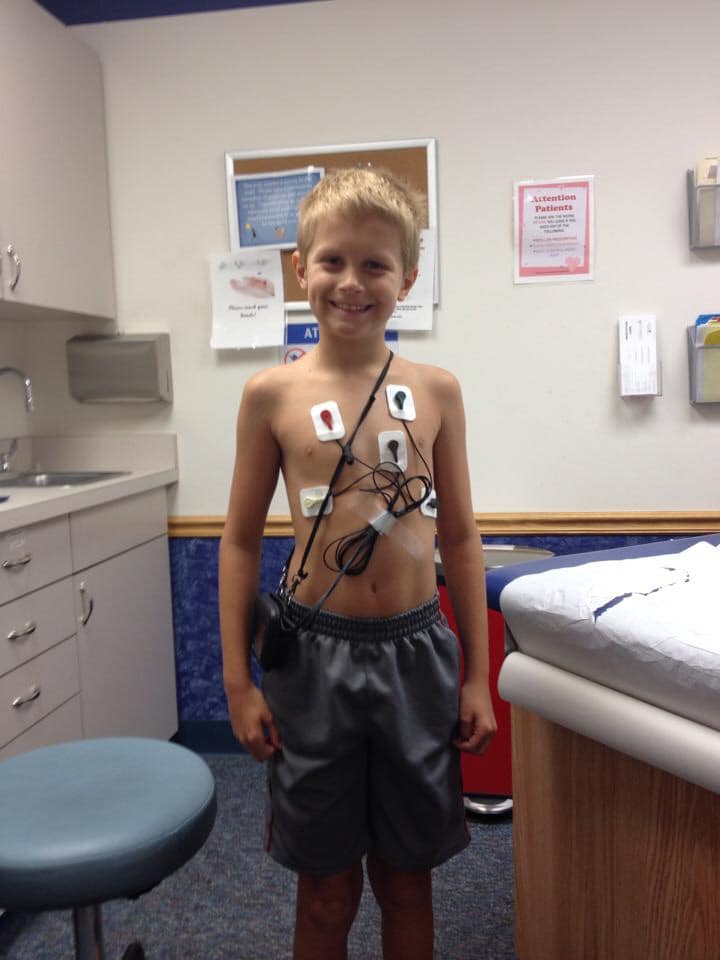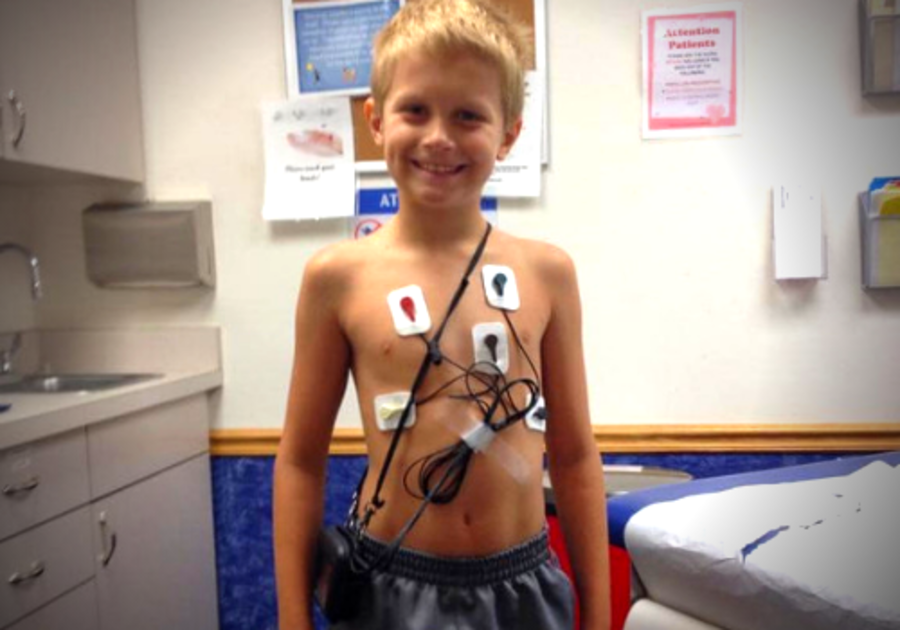My first son was diagnosed with two congenital heart defects after I gave birth. That meant he spent several days in the NICU. It also meant I got a quick crash course in congenital heart defects.
One of the things I learned was how prevalent they are. I had no idea one in 100 babies are born with congenital heart defects.
My son, then just two days old, was diagnosed after my obstetrician heard a faint murmur in his chest. Further testing by a pediatric cardiologist showed he had both a Ventricular Septal Defect and Wolff-Parkinson-White Syndrome.
Upon discharge from the hospital, I was given a stethoscope to take home for monitoring his heart and taught how to apply ice to his face if he became tachycardic (when a heart beats faster than normal) until he could receive medical help. I was also taught to monitor the color of his fingers, toes, and lips to be sure they weren't turning blue.
As a new mom, these instructions were terrifying. I didn't know yet how to be a mom to a baby, let alone a baby with a heart disorder.
But I learned as much as I could, as quickly as I could, and we -- quite literally -- survived. He is now 15 years old.
While my son's heart defects were serious -- one required surgery several years later -- other children are faced with far more complex congenital heart defects that often require the need for lifesaving heart medications, open heart surgeries (in some cases MANY surgeries), and even heart transplants. Sadly, sometimes children don't survive.
Years ago my son would have required an open-heart procedure, but thanks to the advancements in pediatric cardiac technology and treatment, his heart defect was corrected successfully with outpatient catheter ablation. He has also gone through frequent cardiology appointments, annual heart monitoring, and had his first cardiac stress test at 10 years old.

Do you know the 1 in 100?
February is American Heart Month, and a great time to learn about congenital heart defects. It's likely you know someone who has one, given their prevalence. Here are eight facts about congenital heart defects from the Children's Heart Foundation:
- Congenital heart defects are problems present at birth that affect the structure and function of the heart and affect 1 in 100 babies.
- Common examples of congenital heart defects include holes in the inside walls of the heart and narrowed or leaky valves. In more severe congenital heart defects, blood vessels or heart chambers may be missing, poorly formed, and/or in the wrong place.
- Congenital heart defects are America’s most common birth defect, affecting nearly 40,000 babies in the US each year. This equates to 1 child born every 15 minutes.
- Some congenital heart defects can be identified during pregnancy with Level II ultrasounds and fetal echocardiograms, others are identified after birth or later in childhood.
- Advancement of treatment has helped many children with congenital heart defects live longer and healthier lives, and into adulthood. It is estimated that 2 to 3 million people are living with congenital heart defects.
- Congenital heart defects may require several surgeries and are never really "cured."
- Most causes of congenital heart defects are unknown. Only 15 to 20 percent of all congenital heart defects are related to known genetic conditions.
- A baby’s risk of having a congenital heart defect is increased three times if the mother, father, or a sibling has a congenital heart defect.
 Signs and symptoms of congenital heart defects
Signs and symptoms of congenital heart defects
The following are indications that there may be a possible congenital heart defect according to the Congenital Heart Information Network.
Parents should be alert to the following symptoms in infancy:
- Tires easily during feeding
- Sweating around the head, especially during feeding
- Fast breathing when at rest or sleeping
- Pale or bluish skin color
- Poor weight gain
- Sleeps a lot - not playful or curious for any length of time
- Puffy face, hands, and/or feet
- Often irritable, difficult to console
Some children with congenital heart defects might not have any symptoms until later in childhood. Things to look for include:
- Gets out of breath during play
- Difficulty "keeping up" with playmates
- Tires easily/sleeps a lot
- Change in color during active play or sports (looks pale or has a bluish tint around mouth and nose)
- Slow growth and weight gain/poor appetite
- Complains of chest pain and/or heart-pounding
If your child has two or more of these symptoms, talk to your pediatrician about a referral to a pediatric cardiologist, especially if you have a family history of congenital heart defects.
Janel Plunkard is the publisher of Macaroni Kid Springfield, Mo.



